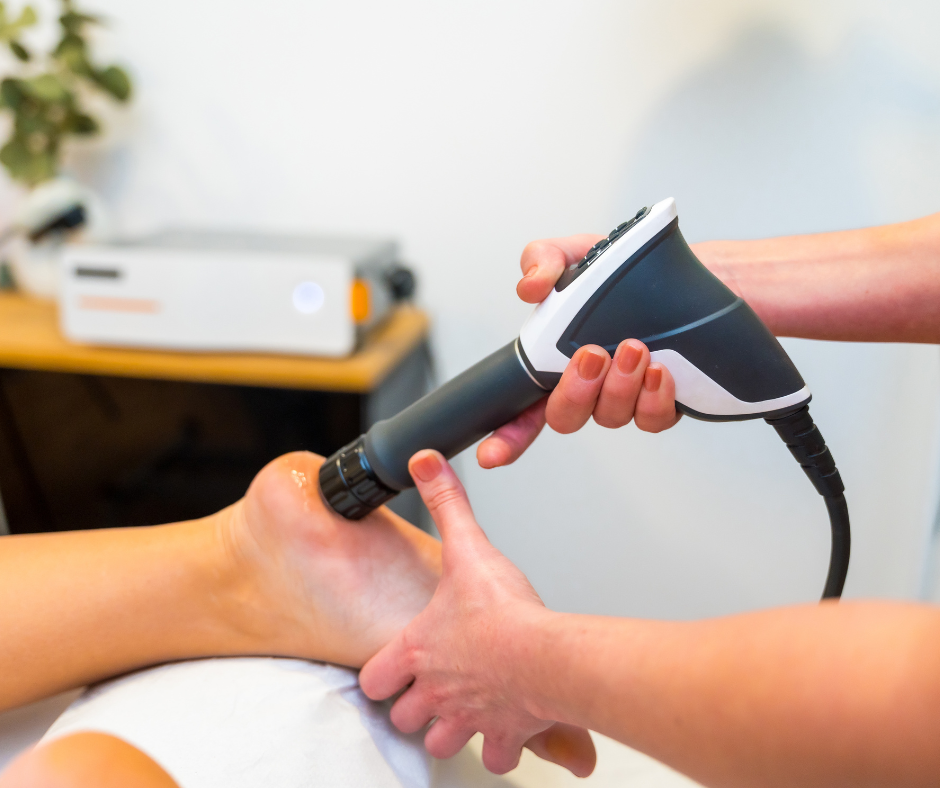-
ESWT Shockwave Therapy Offers a New Approach
Chronic heel pain can make everyday activities like walking and standing unbearable, and while traditional treatments like stretching, orthotics, or injections might provide some relief, they can sometimes fall short.
Enter ESWT (Extracorporeal Shock Wave Therapy), a non-invasive alternative that’s changing the game for heel pain sufferers! Kentlands Foot & Ankle Center is always at the forefront of innovative, non-invasive options, and for this blog post, we’re going to cover all the ins and outs of this exciting option, including why it might be the right choice for you.
The Limitations of Traditional Approaches
Traditional treatments for heel pain, such as physical therapy and the use of orthotics, can be helpful in the initial stages.
- However, they often provide only temporary relief and may not address the underlying cause of the pain.
- In some cases, these treatments can be time-consuming, require a long recovery period, or have unwanted side effects.
ESWT: A Non-Invasive Solution
ESWT is a treatment that utilizes pressure waves to stimulate healing and reduce pain and inflammation. Unlike traditional surgery, ESWT doesn’t involve incisions, anesthesia, or a lengthy recovery period. It also boasts high success rates that are clinically verified.
How ESWT Works
ESWT targets the affected tissue with high-energy pressure waves, stimulating a healing response and promoting tissue regeneration.
- This can be particularly effective for conditions like plantar fasciitis, where the plantar fascia, the thick band of tissue along the bottom of the foot, becomes inflamed.
Shockwave Therapy vs. Traditional Surgery
- No Cutting: ESWT avoids the need for incisions, reducing the risk of complications associated with surgery.
- Faster Healing: Recovery from ESWT is significantly faster. For example, traditional heel spur surgery might require between six weeks and three months for a full recovery.
- Reduced Risk: ESWT eliminates the risk of permanent nerve or joint damage associated with some surgical procedures.
- Minimal Downtime: Patients can typically return to work and daily activities much sooner after ESWT compared to surgery.
- Less Pain: ESWT generally involves less post-treatment pain than traditional surgery.
Aching and unsure options? Consult with your podiatrist to see if ESWT is right for you!
Interested in learning more? We’re always happy to help! Schedule a comprehensive foot examination with Kentlands Foot and Ankle Center podiatrist Dr. Jon M. Sherman. To make your appointment, please call our office at 301-825-9697.
RECENT POSTS
categories
- Uncategorized
- Featured Articles
- Foot Disorders
- Broken Ankle
- Broken Toe
- Fracture
- Foot Health
- Foot Care
- Arthritis
- Foot Pain
- Skin Cancer
- Podiatry Appointment
- Custom Orthotics
- Podiatrist
- Diabetes
- Gout
- Heart Health
- National Nutrition Month
- National Foot Health Awareness Month
- Foot Safety
- Foot and Ankle Injuries
- Falls Prevention
- Chronic Heel Pain
- Shoes
- Laser Therapy
- Quoted
- Physical Therapy
- KeryFlex
- Sweat
- Summer Foot Care
- Sports Injury
- ESWT
- Fungal Toenails
- Bunion



